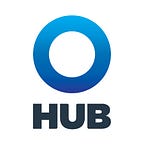Update Job Descriptions to Fit Today’s Talent Needs
With the economy getting back on its feet, many companies are stepping up recruitment efforts. However, there’s a major difference between previous economic recoveries and this one: Many new hires expect a work-from-home option. Job descriptions need to reflect this new reality.
As the COVID-19 pandemic forced millions of office employees to work from home, it also opened up virtual workspaces as a viable, long-term option for many. As a result, organizations are competing for talent that may prefer to work remotely.
That means updated job descriptions are crucial. Not only must they accurately reflect a role’s duties and responsibilities but emphasize remote work options if available. Doing so will reach a larger talent pool while helping weed out underqualified applicants.
In addition, job descriptions provide a foundation for many organizational functions such as hiring, accurate compensation benchmarking, and training.
And perhaps most important: Updating job descriptions help align performance goals to a job’s objectives and duties. This helps alleviate compliance and legal risks as job descriptions can serve as documentation for compliance-related matters like workers’ compensation and the Fair Labor Standards Act.
Best practices for updating job descriptions
It’s not always clear how to update job descriptions. At a minimum job descriptions should be updated at least annually,1 (although many employers only do so when significant job changes are involved).2
The following five steps can serve as a guide for updating job descriptions:
- Evaluate current descriptions and prioritize the most outdated.
- Create a job description template for the entire organization.
- Determine how to best collect information regarding job duties, responsibilities, specifications, work environment and physical demands of the job. Some employers have job incumbents or their managers complete job description questionnaires. Others may interview or directly observe job incumbents.
- Use the resulting information as the basis for new or updated job descriptions that accurately reflect the role.
- Develop procedures to update job descriptions regularly. To keep the process on track, do so with other periodic procedures such as annual employee reviews. However, update job descriptions as soon as possible if the position changes.
Job descriptions are important in recruiting and retaining talent, especially in an era when top candidates are looking for work-from-home options and flexibility. Applying more rigor to processes and procedures that guide job descriptions will have a positive impact over time.
